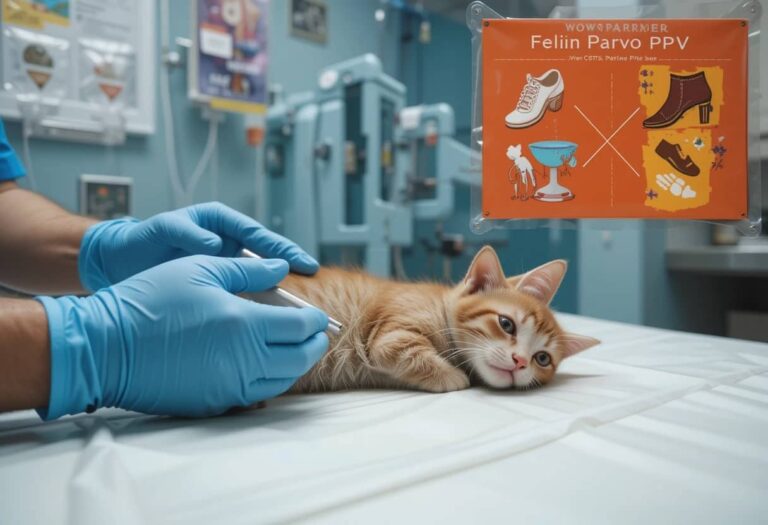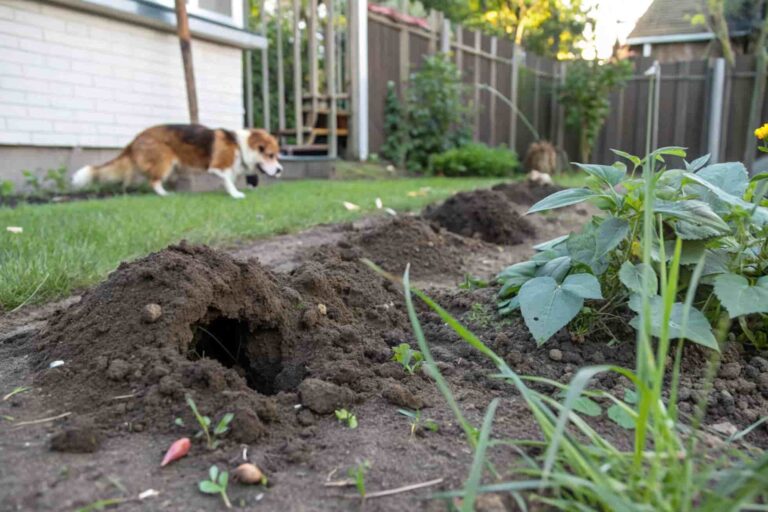When To Euthanize A Dog With Cushing’s Disease – Signs You Shouldn’t Ignore!
Cushing’s disease in dogs is a long-term hormonal condition that affects thousands of pets every year. As it progresses, it can cause a host of physical, behavioral, and emotional changes in your beloved companion. While medications and care can help manage symptoms, there often comes a stage where treatment loses effectiveness, quality of life diminishes, and pet parents begin to consider euthanasia as an act of kindness rather than giving up.
This guide aims to help you understand Cushing’s disease in-depth, identify when it may be time to say goodbye, and to navigate this deeply emotional phase with compassion, clarity, and grace. It’s never easy to face the possibility of letting go, but knowing what to expect can make the journey more bearable. With the right information and support, you can make choices that honor your dog’s life and love.
What Is Cushing’s Disease in Dogs and How Does It Affect Them?
Cushing’s disease, medically known as hyperadrenocorticism, is caused by prolonged exposure to high levels of cortisol, a hormone that regulates metabolism, immune response, and stress. Most commonly, the condition is either pituitary-dependent, caused by a benign tumor in the brain, or adrenal-dependent, where a tumor develops on the adrenal glands near the kidneys.
Common Symptoms of Cushing’s Disease:
Cushing’s is a progressive condition. In the beginning, symptoms may appear mild, but over time, they can become more disruptive to your dog’s health and comfort.
Here’s a breakdown of common clinical signs associated with Cushing’s:
| Early Symptoms | Advanced Symptoms |
| Increased thirst and urination | Weak muscles, trembling, or collapse |
| Pot-bellied appearance | Severe skin infections, wounds not healing |
| Hair thinning or loss | Disorientation or confusion |
| Panting without exertion | Loss of appetite or refusal to eat |
| Frequent urination accidents | Incontinence or urination while sleeping |
| Constant hunger | Trouble breathing and chronic lethargy |
As the disease advances, its toll on the body—and your dog’s happiness—becomes much more noticeable.
What is the life expectancy for dogs with Cushing’s disease?
Dogs with Cushing’s disease can live different lengths of time depending on their health and type of Cushing’s. On average, dogs with pituitary-dependent Cushing’s live 2 to 2.5 years after diagnosis. Dogs with adrenal tumors usually live about 1 year with medication, or up to 4 years with surgery. Some dogs respond well to treatment and live comfortably for years.
Others may decline quickly, especially if they are older or have other health problems, living only weeks to months. It’s important to discuss your dog’s options with your vet. Every dog is unique and needs personalized care. Regular checkups, monitoring, and adjusting treatments can help improve their quality of life. Supportive care and early detection of complications are key. Always work closely with your veterinarian for the best outcomes.
How Long Can Dogs Live With Cushing’s Disease?
Dogs with pituitary-dependent Cushing’s can often live 2 to 3 years with consistent treatment. However, dogs with adrenal tumors may have a shorter lifespan, especially if surgery isn’t possible. Life expectancy varies depending on several important factors:
- Type of Cushing’s Disease – Pituitary vs. adrenal origin plays a major role in prognosis.
- Response to Medication – How well your dog tolerates and responds to treatments like trilostane or mitotane.
- Age and Overall Health – Senior dogs or those with weakened immune systems may decline faster.
- Other Health Conditions – Illnesses like diabetes, kidney disease, or arthritis can complicate treatment.
- Quality of Veterinary Care – Regular monitoring, blood tests, and follow-ups can greatly improve outcomes.
Some dogs remain stable for years, while others may deteriorate within a few months.
How will I know when to euthanize my dog with Cushing’s disease?
Every dog is different, and Cushing’s disease can progress in many ways, making it a difficult and emotional condition to manage. This is why deciding when to consider euthanasia is never a simple or clear-cut choice.It helps to watch for signs of advanced disease, think carefully about whether ongoing treatments are truly helping, and honestly assess your dog’s quality of life. Talking openly with your veterinarian about these factors can guide you in making the kindest decision for your dog.
Look for changes like constant fatigue, poor appetite, frequent infections, or signs that your dog is no longer enjoying daily life.Pain, confusion, and loss of mobility may mean your dog is struggling more than they’re showing.Choosing to let go is never easy—but sometimes, it’s the most loving and peaceful gift we can give.
Also read: Can You Become Paralyzed From Degenerative Disc Disease – Find Out How To Protect Yourself!
What Are the Final Stages of Cushing’s Disease in Dogs?
In the final stages of Cushing’s disease, dogs often experience a significant decline in physical and emotional well-being. Common signs include severe muscle weakness, loss of coordination, incontinence, and frequent infections that no longer heal.

You may also notice labored breathing, refusal to eat, extreme fatigue, and confusion or disorientation. Skin may become thin, inflamed, or wounded, and your dog might obsessively lick or chew painful areas. These symptoms typically indicate that the disease is no longer manageable and your dog’s quality of life is rapidly decreasing.
How Do You Know When a Dog’s Quality of Life Has Reached the Tipping Point?
Constant Fatigue:
A dog with declining health may sleep most of the day and lose interest in previously enjoyable activities. If your dog no longer wants to play, go for walks, or greet you at the door, it’s often a sign that they’re emotionally and physically worn down, pointing to a reduced quality of life.
Ineffective Medications:
Medications that once controlled symptoms may stop working over time. You might notice increased thirst, uncontrolled urination, or more frequent infections. If adjusting doses no longer brings relief, and side effects are worsening, it suggests the disease is progressing beyond manageable stages, making everyday comfort harder to maintain for your dog.
Breathing and Appetite Issues:
Panting heavily without physical activity or struggling to breathe at rest can indicate that Cushing’s disease has advanced. Likewise, when your dog refuses food—even treats they used to love—it often means they are no longer finding joy or nourishment in eating, both strong indicators of declining physical and emotional well-being.
Skin and Mobility Problems:
Painful, inflamed skin or open wounds that don’t heal can cause significant discomfort. Dogs may constantly lick or chew at affected areas. Combined with signs like difficulty standing, limping, or collapsing, this level of physical decline indicates your pet may be suffering more than living, and intervention may no longer help.
Behavioral Changes:
Behavioral shifts such as confusion, restlessness, or sudden withdrawal are serious signs. A once-social dog may avoid interaction or act disoriented, pacing or staring at walls. These changes, often caused by hormone imbalances or neurological decline, reflect emotional distress and discomfort—another key signal that their quality of life is slipping.
How Can the HHHHHMM Scale Help You Evaluate Your Dog’s Quality of Life?
The HHHHHMM Scale is a valuable tool used by veterinarians to help assess a dog’s overall quality of life. It focuses on seven key areas: hurt, hunger, hydration, hygiene, happiness, mobility, and whether your dog has more good days than bad. By reflecting on each of these categories, pet owners can better understand if their dog is still comfortable and content.

If your dog struggles in most of these areas despite treatment, it may be a sign that their quality of life has significantly declined and euthanasia should be gently considered. Making this decision is never easy, but it allows your dog to pass with dignity and peace. Trusting your instincts, with support from your vet, can guide you through this emotional moment.
When Treatment Becomes Too Much?
Resistance to Medication:
Some dogs stop accepting pills or develop negative reactions like restlessness, nausea, or lethargy. If giving medication becomes a daily struggle and causes distress, it may be a sign that treatment is no longer supporting your dog’s overall comfort or quality of life.
Topical Treatment Struggles:
Dogs with painful or sensitive skin may resist baths or ointments, sometimes reacting aggressively. If topical care becomes physically or emotionally stressful for both you and your dog, it may mean that managing symptoms is becoming harder than the benefits it offers.
Heightened Vet Anxiety:
Frequent vet appointments can become overwhelming for dogs, especially seniors. Stress, trembling, and fear during visits may make them dread necessary care. When your dog’s anxiety grows worse with each visit, it may be time to consider their emotional well-being over continued interventions.
Digestive Side Effects:
Medications like trilostane can cause vomiting, diarrhea, or appetite loss in some dogs. These effects can lower energy, reduce the enjoyment of meals, and lead to dehydration. When treatment causes these persistent issues, it often signals that your dog’s body is no longer coping well.
Diminishing Returns:
Over time, treatments may lose effectiveness, even as side effects grow. If your dog continues to decline or suffers despite adjustments in medication or care, it’s a sign that their quality of life is slipping, and the burden of treatment may outweigh the benefits.
Also read: What To Feed A Dog With Inflammatory Bowel Disease – Best Diet Tips That Work!
How Do You Know When It’s Time to Consider Euthanasia for a Dog with Cushing’s Disease?
- Lack of Response or Awareness: If your dog no longer reacts to your voice, touch, or presence, it may be a sign of cognitive decline or emotional detachment, often indicating that their engagement with the world—and their joy in it—has significantly faded.
- Withdrawal from Interaction: Avoiding contact with family members or other pets, isolating themselves, or resisting affection are emotional signals that your dog may no longer find comfort in companionship, which can reflect growing discomfort or internal distress.
- Loss of Mobility and Control: Struggling to stand, walk, or control urination and bowel movements can affect your dog’s dignity and independence. When these challenges become daily obstacles, their quality of life may be seriously compromised.
- Discomfort While Resting or Sleeping: A dog who can’t get comfortable, wakes often, or shows signs of restlessness during rest is likely in chronic discomfort. If even sleep offers no relief, their body is no longer providing the peace they need to heal or enjoy life.
- Labored or Shallow Breathing: When your dog breathes heavily or shallowly while at rest, it could be a sign of internal organ stress or disease progression. Persistent breathing difficulties suggest their body is tiring, and comfort is becoming harder to maintain.
What Happens During Euthanasia?
If you decide to proceed with euthanasia, understanding the process can bring comfort during a difficult time. Your veterinarian will typically begin with a gentle sedative to help your dog relax and ease any anxiety or discomfort. Once your dog is peacefully resting, a second injection is administered to stop the heart painlessly and quickly. The entire procedure usually takes only a few minutes.
Many families choose to be present, offering love and support during those final moments. Euthanasia can take place at home or in a veterinary clinic, based on your preference. Whatever you choose, know that this final act is rooted in deep love and compassion. It offers your dog a peaceful passing and freedom from further pain.
How Can You Cope with the Loss of a Dog After Euthanasia?
After euthanasia, grief can be deep and overwhelming. Feelings of sadness, guilt, or even anger are completely natural and should be acknowledged with kindness. Permit yourself to grieve—there’s no right timeline for healing. Talk to trusted friends or join a pet loss support group. Create a tribute through photos, keepsakes, or by planting something meaningful.

Writing in a journal or penning a letter to your dog can also bring comfort. Remember, every choice you made came from love, and that love never truly leaves you. In time, memories will bring more smiles than tears. Until then, be gentle with your heart.
FAQs:
What Foods Should Dogs with Cushing’s Disease Avoid?
Dogs with Cushing’s disease should avoid high-fat, high-sugar, and heavily processed foods. These can worsen weight gain, insulin resistance, and inflammation. Steer clear of table scraps, fatty meats, and commercial treats with artificial additives. A low-fat, high-protein diet rich in fiber and antioxidants is typically recommended for managing symptoms.
How Do You Know When It’s Time to Put Your Dog Down with Cushing’s Disease?
It may be time to consider euthanasia when your dog shows signs of constant discomfort, pain, or confusion, such as severe lethargy, incontinence, refusal to eat, or labored breathing. When good days are rare and treatments are no longer effective, euthanasia can offer a peaceful, compassionate end to suffering.
Is Walking Good for a Dog with Cushing’s Disease?
Yes, short and gentle walks can benefit dogs with Cushing’s disease by supporting joint health, maintaining mobility, and improving mood. However, avoid overexertion, especially if your dog seems tired or weak. Always adjust the length and pace of walks based on your dog’s energy level and symptoms.
Is a Dog with Cushing’s Disease in Pain?
Cushing’s disease itself is not usually painful, but the secondary symptoms—such as skin infections, muscle loss, or joint strain—can cause discomfort. As the disease progresses, pain may increase. Monitoring behavior, appetite, and movement helps determine if your dog is in distress and needs veterinary attention.
What Is Knuckling in Dogs?
Knuckling is when a dog drags or tucks its paw under while walking, causing the top of the paw to scrape the ground. It can be a sign of nerve damage, weakness, or neurological decline. In dogs with Cushing’s, knuckling may appear in later stages due to muscle wasting and mobility loss.
Conclusion:
Choosing when to euthanize a dog with Cushing’s disease is one of the hardest and most personal decisions a pet parent will ever face. By understanding the symptoms, recognizing the signs of advanced decline, and honestly evaluating quality of life, you can make the kindest decision rooted in love.
Your dog has given you a lifetime of loyalty—offering peace in their final moments is the most selfless gift you can give in return. Let compassion guide you, and know you’re not alone.Lean on your veterinarian, loved ones, and support resources to navigate the journey. Each dog is unique, and so is the path to saying goodbye. In honoring their life, you also honor the bond that will live in your heart forever.
Related post:






